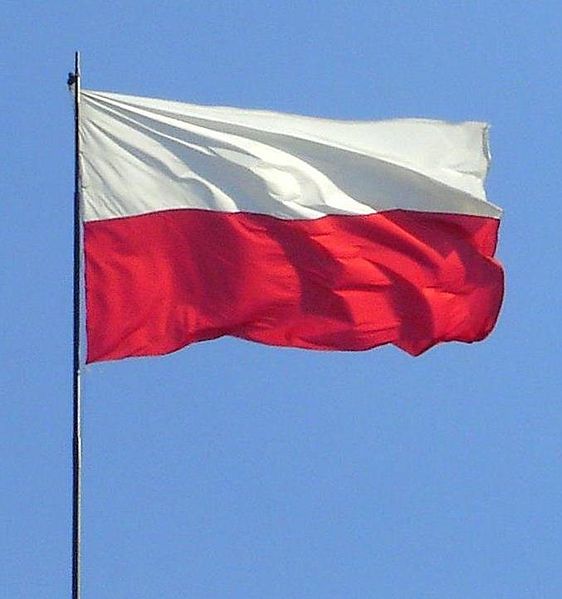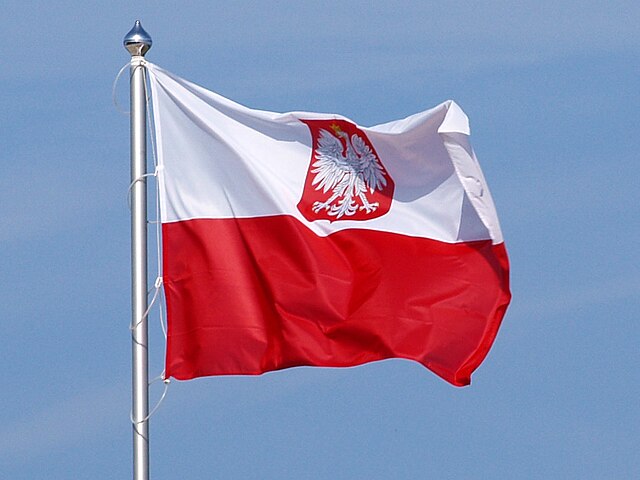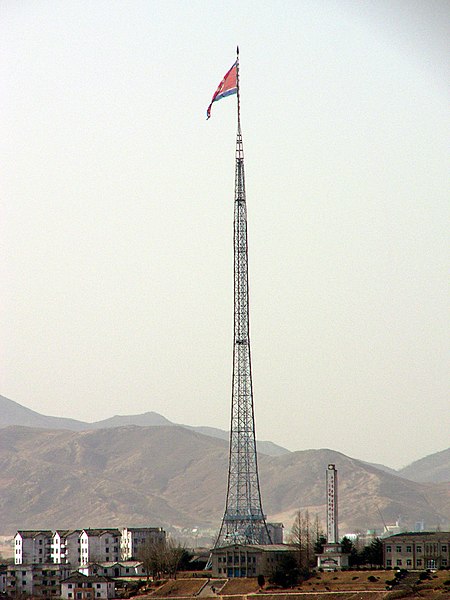The national flag of Poland consists of two horizontal stripes of equal width, the upper one white and the lower one red. The two colours are defined in the Polish constitution as the national colours. A variant of the flag with the national coat of arms in the middle of the white fess is legally reserved for official use abroad and at sea. A similar flag with the addition of a white eagle is used as the naval ensign of Poland.
Flag without the coat of arms
Flag with the coat of arms
The Polish, Papal (yellow and white) and Municipal (white and blue) flags in Kraków's Grand Square during Pope Benedict XVI's visit to Poland on 27 May 2006
Example of vertical alignment of Polish national colours inside the Sejm chamber
A national flag is a flag that represents and symbolizes a given nation. It is flown by the government of that nation, but can also be flown by its citizens. A national flag is typically designed with specific meanings for its colours and symbols, which may also be used separately from the flag as a symbol of the nation. The design of a national flag is sometimes altered after the occurrence of important historical events. The burning or destruction of a national flag is a greatly symbolic act.
Johnson's new chart of national emblems, published c. 1868. The large flags shown in the corners are the 37-star flag of the United States (flown 1867–1890), upper left; the Royal Standard of the United Kingdom, upper, right; the Russian Imperial Standard, lower left; and the French tricolore with inset Imperial Eagle, lower right. Various other flags flown by ships are shown. The Flag of Cuba is labelled "Cuban (so called)". The Chinese dragon on the
The first Italian flag brought to Florence by Francesco Saverio Altamura (1859)
A 1919 painting depicting the Brazilian flag being embroidered by a family.
The world's sixth tallest flagpole flying a 270 kg (595 lb) Flag of North Korea. It is 160 m (525 ft) in height, over Kijŏng-dong ("Peace village") near Panmunjom, the border of North Korea and South Korea.








